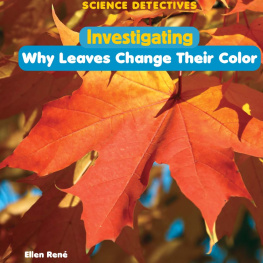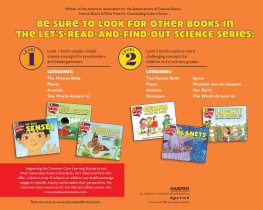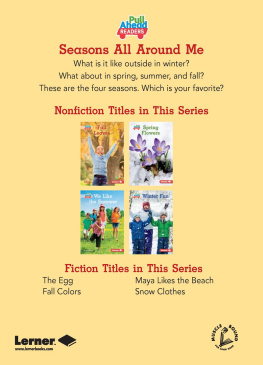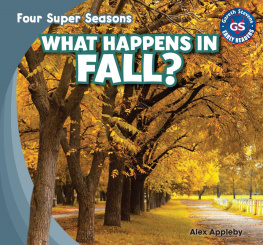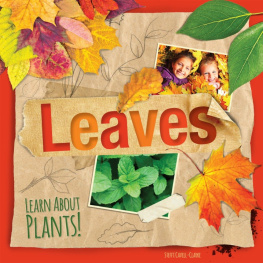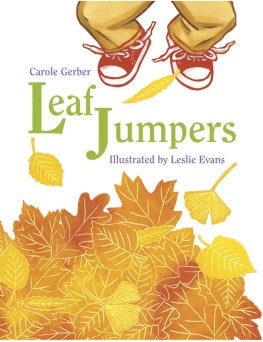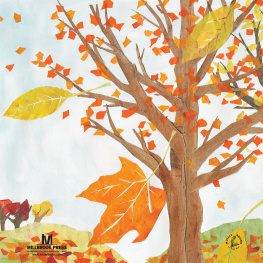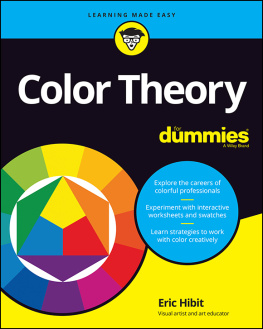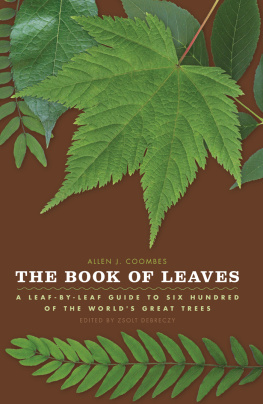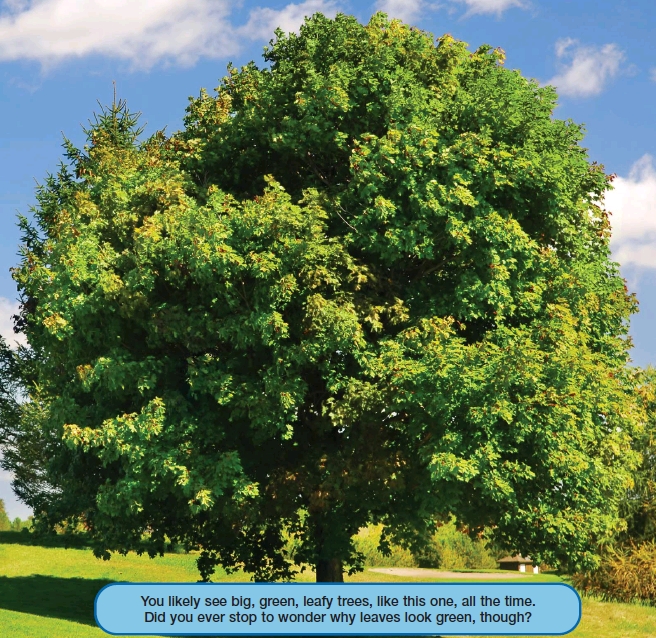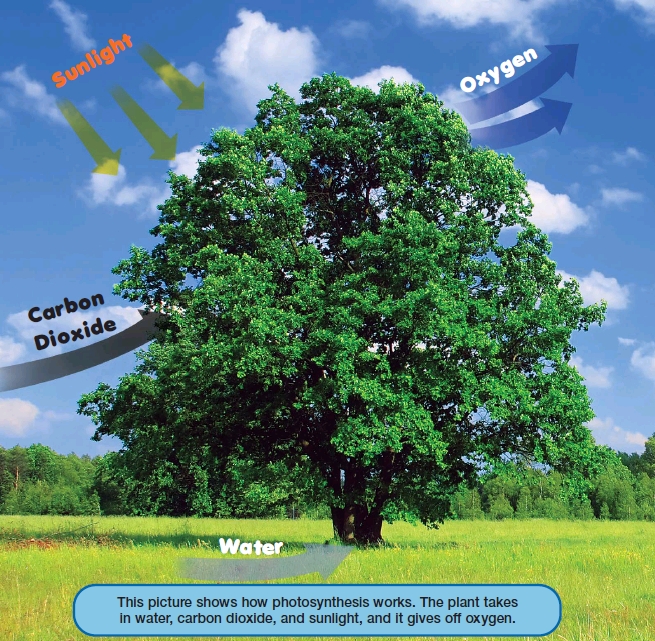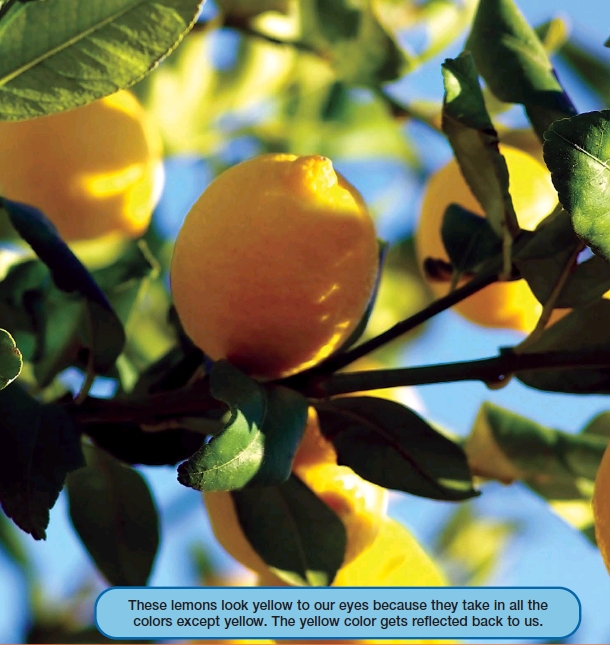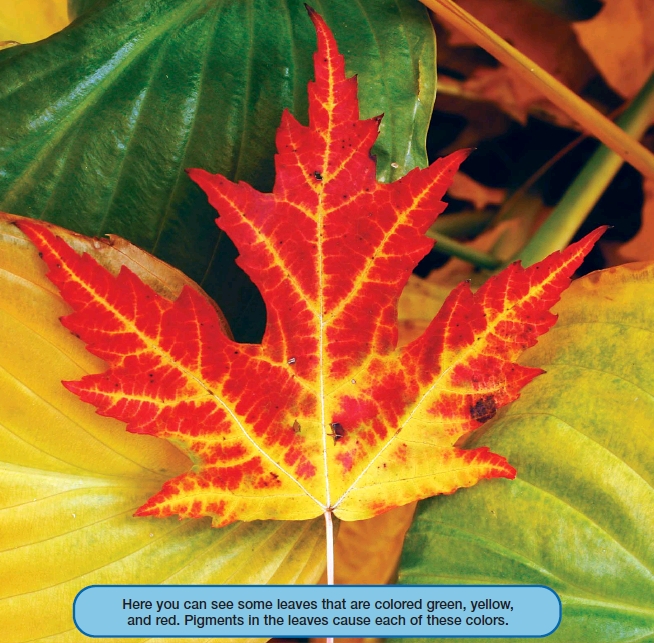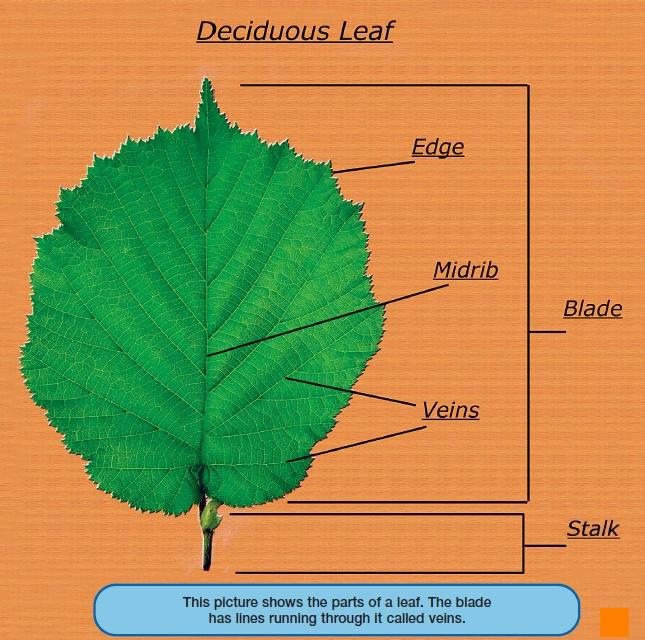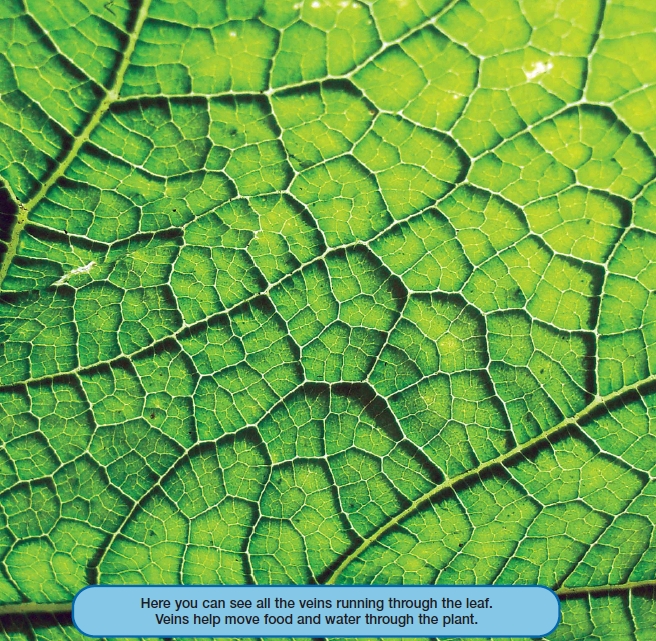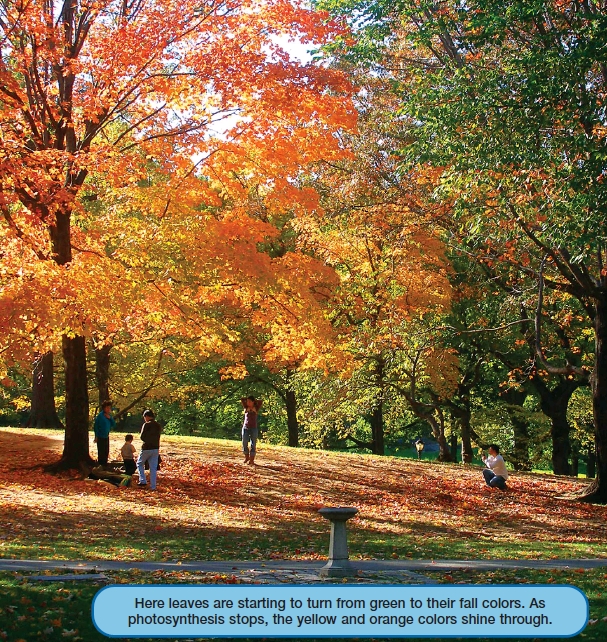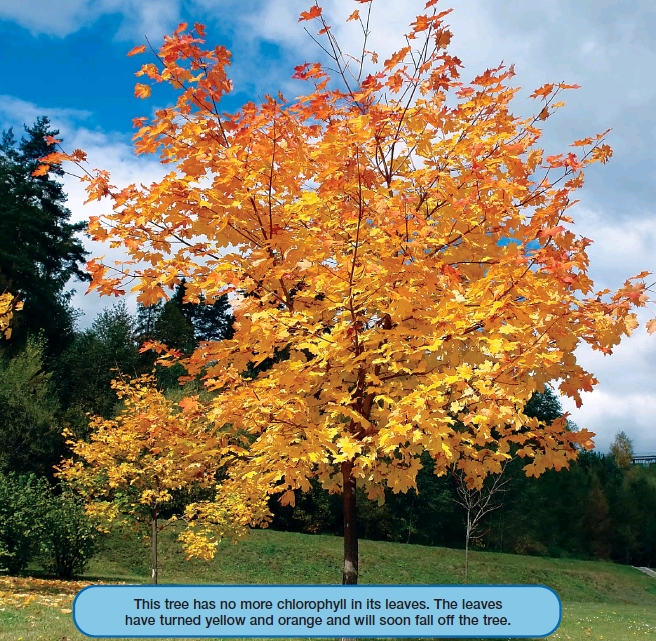To my daughter, Emily, who colors my life with love and laughter
Published in 2009 by The Rosen Publishing Group, Inc.
29 East 21st Street, New York, NY 10010
Copyright 2009 by The Rosen Publishing Group, Inc.
All rights reserved. No part of this book may be reproduced in any form without permission in writing from the publisher, except by a reviewer.
First Edition
Editor: Joanne Randolph
Book Design: Julio Gil
Photo Researcher: Jessica Gerweck
Photo Credits: Cover, back cover (top center, top right, middle left, bottom left), pp. 5, 6, 9, 10,
13, 14, 17, 18, 21 Shutterstock.com; back cover (middle center) Jim Merli; back cover (middle right) Fat Chance Productions.
Library of Congress Cataloging-in-Publication Data
Ren, Ellen.
Investigating why leaves change their color / Ellen Rene. 1st ed.
p. cm. (Science detectives)
Includes index.
ISBN 978-1-4042-4485-6 (library binding)
1. LeavesColorJuvenile literature. 2. Fall foliageJuvenile literature. I. Title. QK649.R46 2009 575.5'7dc22
2008003885
Manufactured in the United States of America
Contents
Out of Thin Air
Have you ever looked up at a tall, leafy tree and wondered, How did it get so big? For a long time scientists did not know. They thought plants, like animals, had to eat to grow. The scientists guessed that plants ate something in soil.
Today we know that plants build themselves mostly from the air. That is where they get carbon , a building block for life. The carbon plants use comes from carbon dioxide , a gas in the air. Plants turn carbon dioxide and water into food. This is called photosynthesis , and it takes place inside green leaves. Why green leaves, you might ask? What about when leaves change their color?
What Is Photosynthesis?
Plants need energy, or power, to live and grow. They get it from sugar, the energy-rich food they make. Where does the energy stored in sugar come from? That energy comes from the Sun. Photosynthesis means putting together by light. Sunlight helps plants put carbon dioxide and water together to make sugars and other carbohydrates . The plant gives off oxygen , the gas we breathe.
Plants have to trap sunlight before they can use it, though. How do they do that? They have a powerful, green superhero in their leaves. It saves the day, or really, daylight. This plant superhero is chlorophyll !
Chlorophyll and Sunlight
Mixing light is not the same as mixing paint. The three primary light colors are red, green, and blue. Red and blue light mix to make magenta. Red and green make yellow. Blue and green make a color called cyan. Mixing all primary light colors together makes white
Chlorophyll traps sunlight and helps plants use the energy it holds. People use sunlights energy, too. We need it to keep us warm and we need it to see. The Sun makes its own light. Most things do not. Sunlight looks white to us. It is really made up of waves of many different colors, though.
An objects color depends on the light waves it reflects , or sends, back to our eyes. White objects reflect all colors of light. Black objects take in, or absorb, all colors of light. Chlorophyll absorbs most sunlight. It reflects green waves, though, so it looks green.
What Makes Leaf Colors?
Pigments color living things. They absorb and reflect different waves of light so an apple looks red and a sunflower looks yellow. Three groups of pigments color leaves.
Chlorophyll colors leaves green. Carotenoids color them mostly yellow and orange. Both groups are found in leaves all through the growing season. Anthocyanins are made in fall. They color leaves red and purple.
Pigments do more than color leaves. They help leaves carry on life processes. The carotenoids help out with photosynthesis. They catch light and pass it to chlorophyll.
Tannins are waste from plant cells. They build up in dying leaves and color them brown. Scientists also think tannins are made to keep plants safe from bugs and animals that eat leaves.
Sun Catchers
Some plants track the Sun They turn their leaves to catch its most direct rays. As the Sun moves across the sky during the day, the plants leaves move to follow the Sun.
Leaves come in different shapes and sizes. Some leaves grow as long as railroad cars. Others fit on the head of a pin. All carry on photosynthesis. The way they are built helps them do this job.
Most leaves have two parts, a blade and a stalk. The thin stalk fixes it to the plant. The wider blade helps leaves catch sunlight and take in carbon dioxide. Gases move in and out of leaves through tiny openings, or pores. A thin, waxy coating covers most leaves. It keeps them safe and keeps them from drying out.
How Do Plants Move Food Around?
Roots take in water and minerals from soil. Leaves make food and other matter. How do things move around inside plants? They move through a system of tubes. One kind of tube moves water and minerals up from roots to leaves.
Another kind of tube moves food from the leaves to where it is needed. Leaves use some of the sugars they make in photosynthesis. Extra food goes to other plant parts, like stems and roots, where it is used or stored. The two kinds of tubes are the veins you see on leaves.
Hidden Color
During the growing season, photosynthesis goes on full blast. Leaves make lots of chlorophyll. They need a steady supply. Sunlight breaks chlorophyll down. This happens in the same way that sunlight fades colored paper or cloth over time. Leaves also make carotenoids to help chlorophyll. Why are leaves green if yellow and orange pigments are present?
Look at bananas for clues. As bananas ripen, they turn from green to yellow. Yellow color is there all along. Chlorophyll hides it. When chlorophyll breaks down, yellow color shows through. What do you think will happen when photosynthesis stops in leaves?
Shutting Down

